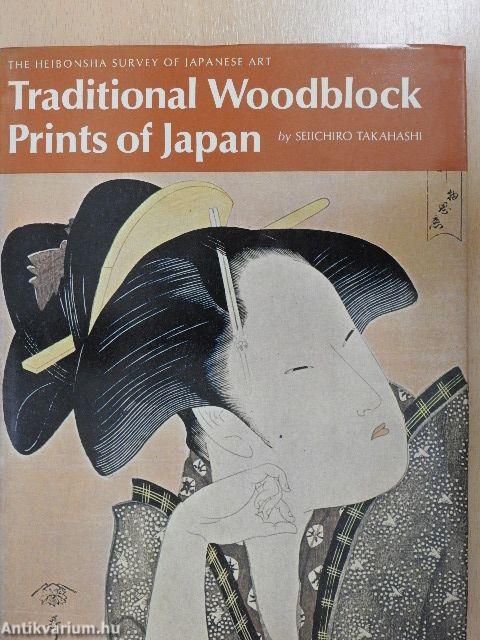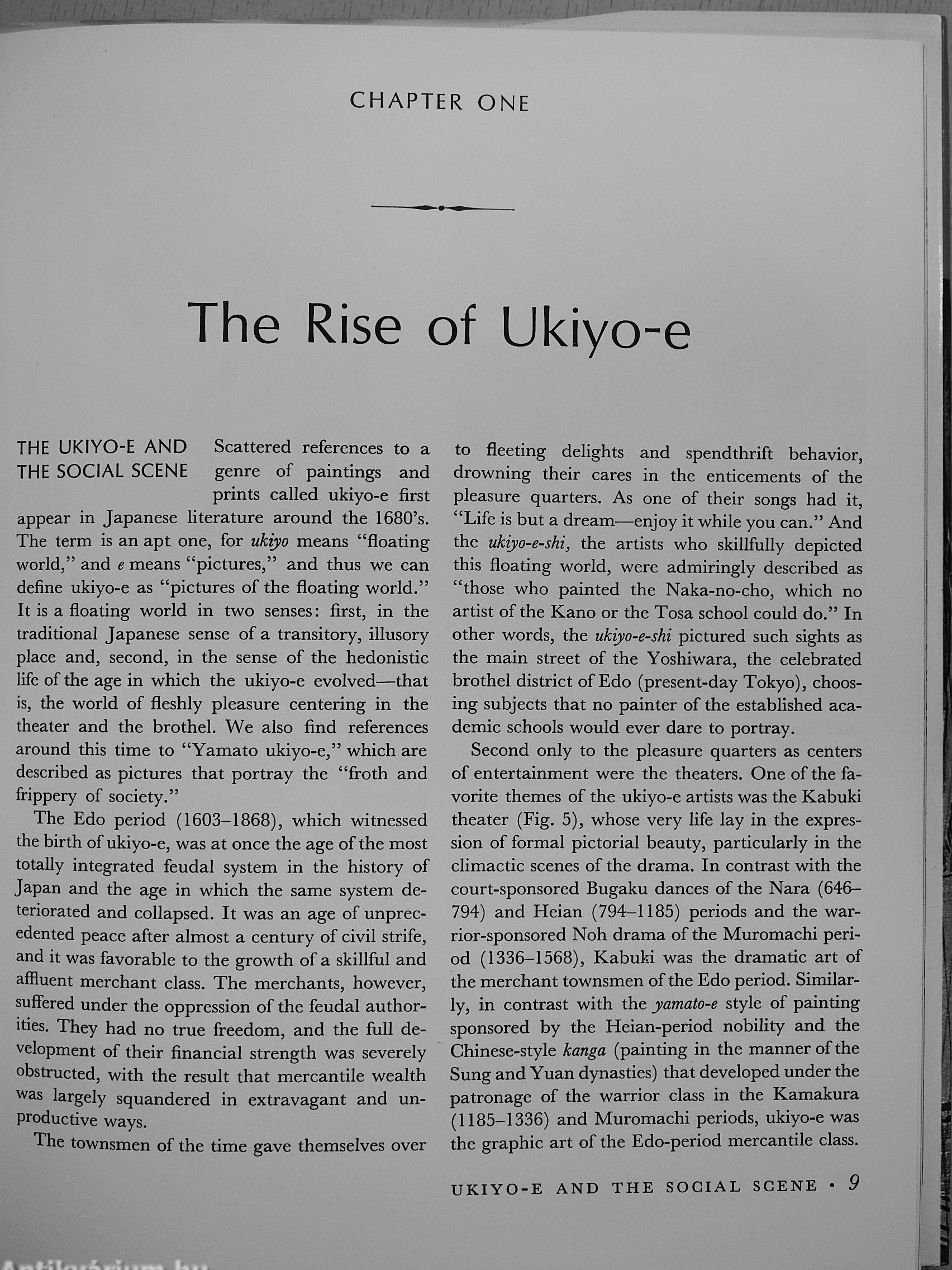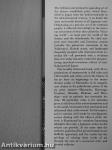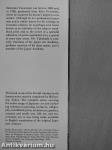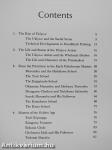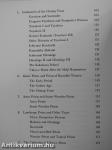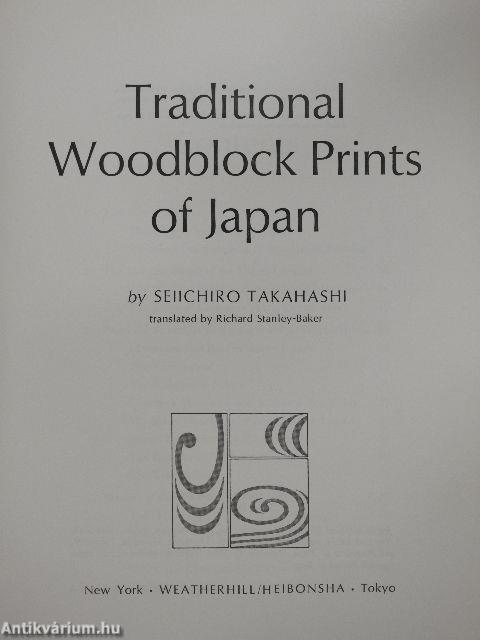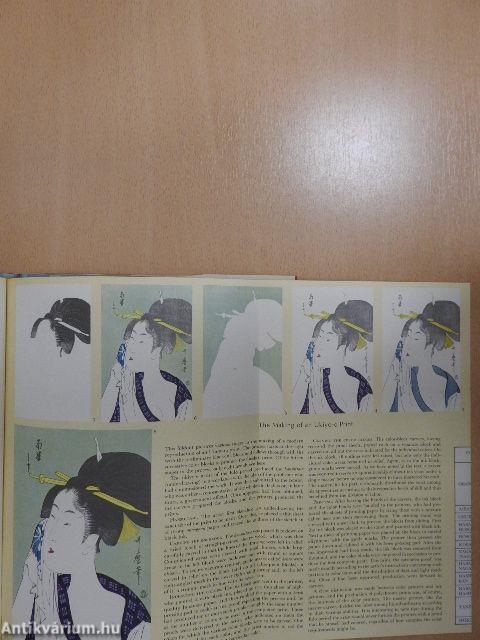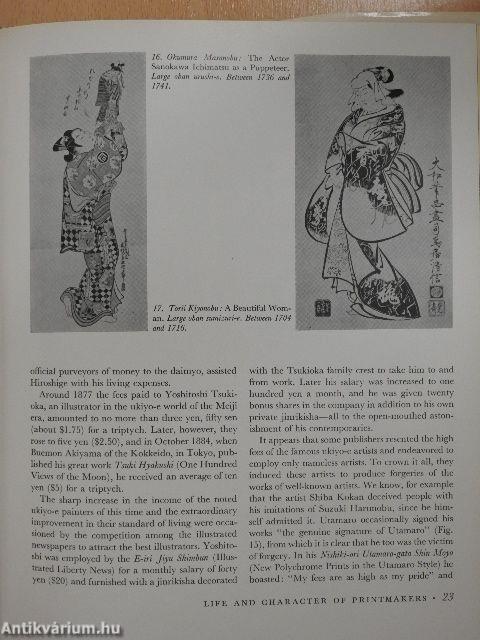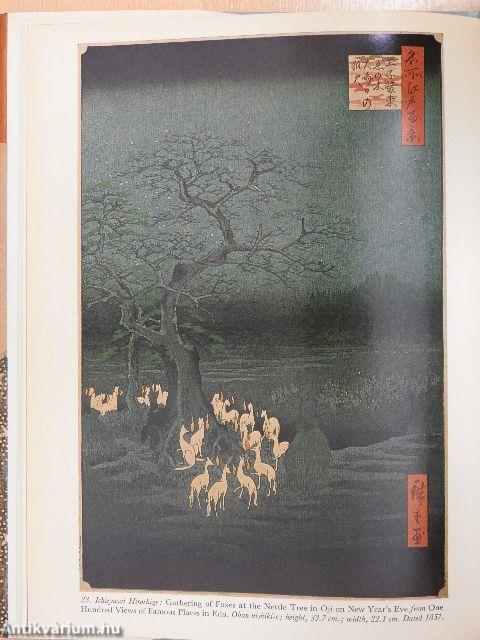1.117.562
kiadvánnyal nyújtjuk Magyarország legnagyobb antikvár könyv-kínálatát
Traditional Woodblock Prints of Japan
| Kiadó: | John Weatherhill, Inc.-Heibonsha |
|---|---|
| Kiadás helye: | New York-Tokió |
| Kiadás éve: | |
| Kötés típusa: | Fűzött keménykötés |
| Oldalszám: | 175 oldal |
| Sorozatcím: | The Heibonsha Survey of Japanese Art |
| Kötetszám: | 22 |
| Nyelv: | Angol |
| Méret: | 24 cm x 19 cm |
| ISBN: | 0-8348-1002-6 |
| Megjegyzés: | Színes és fekete-fehér reprodukciókkal. További kapcsolódó személyek a könyvben. |
naponta értesítjük a beérkező friss
kiadványokról
naponta értesítjük a beérkező friss
kiadványokról
Előszó
TovábbFülszöveg
i
The brilliant and intimately appealing art of the ukiyo-e woodblock print, which flourished in Japan from the mid-seventeenth to the mid-nineteenth century, is no doubt the most universally known of all Japanese arts. Originating as a genuine art of the common people, it reflected their delight in the sensuous attractions of what they called the "floating world"—in large part the world of the theater and the demimonde. Its chief subjects were beautiful and licentious women (notably the glamorous courtesans of the Yoshiwara), Kabuki actors, and landscapes frequently peopled with characters from everyday life—all presented with a vividness that even today instantly evokes the pleasure-loving merchant-townsman culture of late-feudal-period Japan.
This lavishly illustrated book, with 49 reproductions of masterworks in full color and 129 in black and white, covers the history of the art from its beginnings in the monochrome prints of Moronobu to its magnificent climax in the... Tovább
Fülszöveg
i
The brilliant and intimately appealing art of the ukiyo-e woodblock print, which flourished in Japan from the mid-seventeenth to the mid-nineteenth century, is no doubt the most universally known of all Japanese arts. Originating as a genuine art of the common people, it reflected their delight in the sensuous attractions of what they called the "floating world"—in large part the world of the theater and the demimonde. Its chief subjects were beautiful and licentious women (notably the glamorous courtesans of the Yoshiwara), Kabuki actors, and landscapes frequently peopled with characters from everyday life—all presented with a vividness that even today instantly evokes the pleasure-loving merchant-townsman culture of late-feudal-period Japan.
This lavishly illustrated book, with 49 reproductions of masterworks in full color and 129 in black and white, covers the history of the art from its beginnings in the monochrome prints of Moronobu to its magnificent climax in the polychrome prints of the six great masters—Harunobu, Kiyonaga, Utamaro, Sharaku, Hokusai, and Hiroshige—and its pathetic but inevitable decline. Of particular value is the attention given to the lives of the artists themselves and to the social environment that motivated and influenced their achievement. In this respect, and in contrast with books by non-Japanese writers dealing with the ukiyo-e print, the book is illuminated by countless fascinating sidelights that only a Japanese writer on the subject can provide. At the same time the aesthetic qualities of the prints themselves are skillfully appraised, and the reader has the privilege of viewing these works of art through the eyes of a renowned critic and devoted collector.
Seiichiro Takahashi was born in 1884 and, in 1908, graduated from Keio University, where he acquired his doctor's degree in economics. Although he is a professional economist and is widely known for his writings on economic subjects, he is perhaps even better known as an authority on the ukiyo-e woodblock print and as the owner of a splendid collection of prints assembled over a period of some sixty years. Mr. Takahashi is presently chairman of the Japan Art Academy, professor emeritus of his alma mater, and a member of the Japan Academy.
This book is one of the 30-odd volumes in the famous series recently completed by Heibon-sha, Tokyo. The complete series, covering the entire range of Japanese art and including volumes on painting, sculpture, calligraphy, woodblock prints, architecture, gardens, costume and textile arts, folk art, and tea-ceremony art, is now being made available in English translations of the original Japanese volumes.
Jacket illustrations: (front) portrait of a courtesan from a set of prints entitled Kasen Koi no Bu (Selection of Love Poems), by Kitagawa Utamaro, about 1795; (back) Tsuchi-yama, from Tokaido Gojusan Tsugi (The Fifty-three Stations on the Tokaido), by Ichiryusai Hiroshige, 1833. Printed in Japan.
/ /'Mi/;/¦
I.' I U, i ¦ / ¦ ll ' < ' '!' ' I , . ' '
' / ^ , /.'¦• 'i I v' ' ,
V ' -/¦''^¦'i >¦ iűii
".t
¦: /- .'"i r. . -rif h:
^¦r' y ^Ir' 'I i'
ii/¦¦. ^ ^^
f f', ¦ ' ¦ '' ¦ a ¦-/.¦, I- . yi ' ¦ i Vissza
Témakörök
- Idegennyelv > Idegennyelvű könyvek > Angol > Művészetek > Festészet
- Idegennyelv > Idegennyelvű könyvek > Angol > Művészetek > Művészettörténet, általános
- Művészetek > Művészettörténet általános > Kontinensek művészete > Ázsia > Keleti
- Művészetek > Művészettörténet általános > Idegen nyelv > Angol
- Művészetek > Festészet > Korszakok, stílusok > XVII. század
- Művészetek > Festészet > Korszakok, stílusok > XVIII. század > Egyéb
- Művészetek > Festészet > Korszakok, stílusok > XIX. század > Egyéb
- Művészetek > Festészet > Rajz, grafika > Története > Külföldi > Egyéb
- Művészetek > Festészet > Idegen nyelv > Angol
- Művészetek > Festészet > Tanulmányok, összefoglalók > Külföldi
- Művészetek > Festészet > Általános festészet > Története
Seiichiro Takahashi
Seiichiro Takahashi műveinek az Antikvarium.hu-n kapható vagy előjegyezhető listáját itt tekintheti meg: Seiichiro Takahashi könyvek, művekMegvásárolható példányok
Nincs megvásárolható példány
A könyv összes megrendelhető példánya elfogyott. Ha kívánja, előjegyezheti a könyvet, és amint a könyv egy újabb példánya elérhető lesz, értesítjük.


